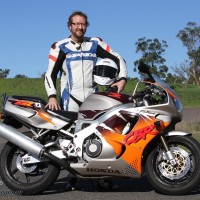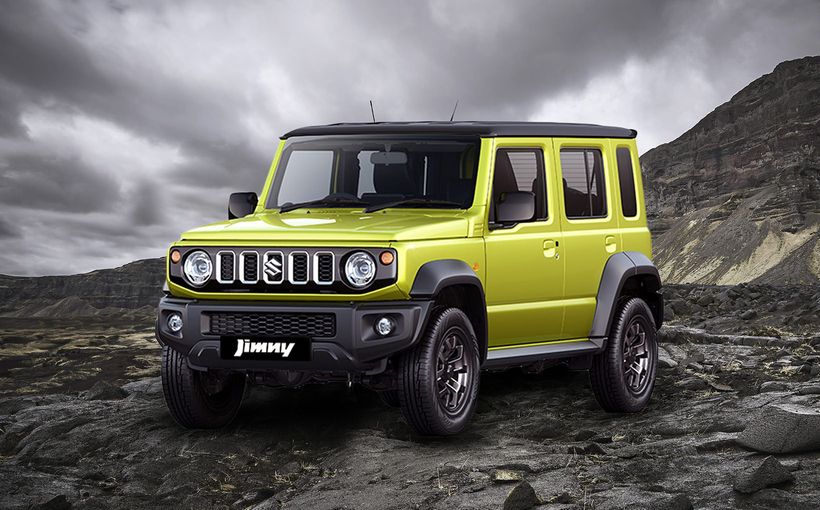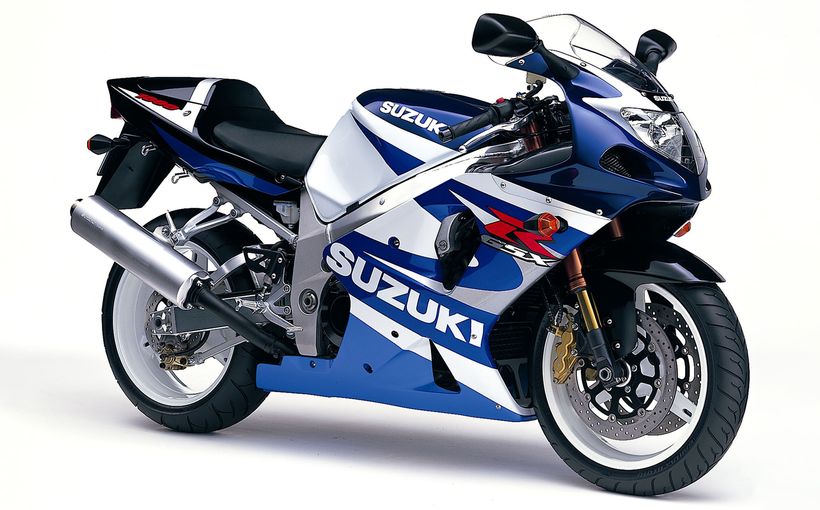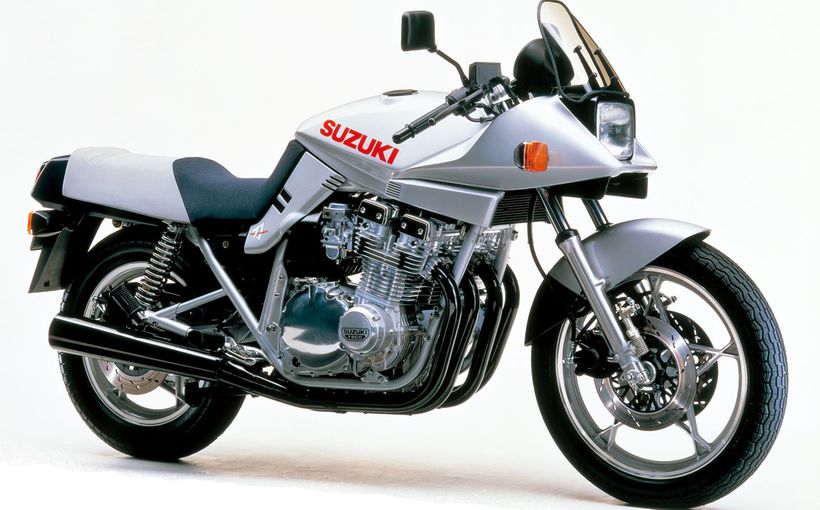
Test: Jeff Ware Photography: Keith Muir
The previous generation GSX-R1000 to the all-new back in 2012 Gixer was one fantastic bike. So good, in fact, that is cleaned up the Rapid Bikes 2009 Superbike Shootout, so just how much better was the 2012 model? 10-years ago, I headed to Phillip Island to find out…

From a purely aesthetic point of view, the new bike looked much better. The blue and white had a lot more blue in it, all the way up the side panels and, thankfully, those ugly twin mufflers and the four-into-two had been replace by a sleek, lightweight four-into-one. And us journalists sat through yet another presentation stating that four-into-one is the optimum layout. That’s after the presentation in 2009 saying four-into-two is better!


The rest of the bike looked the same apart from some slight styling changes around the tail and the seat. The technical presentation revealed changes that were purposeful and well researched and not marketing hype. Everything new on the bike contributed to this being the best GSX-R1000 to date.

THE RIDE
I headed out of pit lane at Phillip Island with standard suspension settings and fresh Bridgestone OEM tyres. Most manufacturers choose more race-oriented rubber for track launches but Suzuki always sticks with the OEM rubber. This can work for and against a bike – as a test rider I’d personally prefer not to be limited by tyres during a test, as I often can’t explore the true potential of a bike when tyres are the limiting factor. The flip side is that the bikes are tested as bought off the showroom floor. However, there are very few owners who would attend a track day without fitting appropriate rubber, so I think OEM tyres are often better for road only tests if they are not a pure soft compound sports tyre.

In saying all that, the Bridgestone’s were good and handled the many laps easily. They proved very durable and as the track temperature came up during the day they really came good – but they are not a track tyre. The rear tyre was a limiting factor. It was OK for the top guys like Gilesy and Waters, who enjoyed smoking them up everywhere, but for a rider like me who is more old school and likes to keep my wheels inline, I would have preferred R10s or similar. The BT20s are a huge improvement over the old BT-016s though that’s for sure.

Back to the bike. I’ve lost a bit of pork lately, well, 13kg, so it was great to get out and find that I didn’t have to come in and ask Phil Tainton to pull a spring out of the Team Suzuki race transporter for my fat arse! The bike feels light, nimble and I didn’t touch a clicker all day…
The first thing I notice is the improvement in change of direct – doubtless due to the weight of the exhaust being lower. It is so, so easy to flick the bike from full lean to full lean even through fast sections like the Hayshed. In fact, the GSX-R is more nimble than the Blade and S 1000 RR through here, both recently launched at the same track.
The second standout for me in my first session is the fantastic improvement in the front brakes – a previous thorn in the GSX-Rs side. Initial bite is great, followed by easy modulation through small braking inputs and much more intimate feel at the lever.

Despite the BTL clutch being retained from 2009, the bike seems to run into corners more freely, despite the increase in compression. So overall the combined braking package is, thanks partly to the stability of the BPF forks, sensational.
As I get into a rhythm on the 1000 I am also impressed by drive and acceleration off turns from low to mid range rpm. Out of turn four and MG the GSX-R stonks even more than it used to. Definitely cementing it once again as the King of stomp…

One problem I am experiencing and, as it turns out, three other journalists also, is that my left thumb is flicking the Drive Mode switch, meaning the bike switches from C to A to B to C to A constantly throughout the lap and a few near highsides result when power suddenly comes in. It’s located below the left switchblock and honestly, for all the brilliant engineering that comes out of Suzuki, I’m stunned that this switch got through. If I owned one of these, I’d disable the switch ASAP and find an alternative. In fact, I really don’t see the need for the three modes at all. A is fine at all times and the bike is so predictable that wet weather riding is not going to be difficult, negating the need for any map changes.
Back in the pits Phil and the lads tape up my bike’s drive mode switch and apart from getting my gearlever raised a bit, no more changes are required for the day. A first for me on a stock bike.
The next four sessions are fantastic. We normally get four but I manage five somehow. The thing I love about the GSX-R1000 is the feedback from the chassis and the grunty, ballsy engine and the 2012 model has retained those traits.

The softer suspension, although I am yet to try the bike on road, feels like it could be a near perfect compromise between track and street and along with the chassis feedback, the bike promotes confidence in the rider and this was really highlighted by the fact that I could spin and slide the rear tyre off some of the faster corner with confidence – not my usual style. I’m no ex dirt tracker, no way. I also had a few front tucks midway through turn two and I was able to easily ride them out. These things highlight what a brilliant chassis the bike has – and with more track-oriented rubber it would have been on rails.

The GSX-R is a fantastic bike for those of us who need feedback and feel and didn’t grow up riding GP bikes with stiff chassis’. All of that feel translates to a good roadbike and no wonder the Gixer has always been a favourite on Aussie roads. So much information is available from the pegs, the seat, the bars and generally the bike just moving around nicely. It’s a brilliantly communicable machine in an era where stiffness is taking feel away from us riders and then electronics are being dialled in to compensate. The lap time goes down but the riding experience often does also. With the Suzuki, I still get that proper riding experience buzz. I feel like I’m the one in control…

The engine characteristics perfectly compliment the chassis. High performance with predictability and lots and lots of feel on the throttle. For me, it is a real bonus. I like my right wrist and brain to be a directly linked to that back wheel as possible and the GSX-R is fantastic in that area. Feeding power on predictable and finding grip is easy and the bike doesn’t need traction control. The smooth engine and the ECU controlled secondary butterflies take care of all that, along with the conrod ratio, cam profiles and power curve, and allow the rider to be the traction control. Sure, as big horsepower numbers slowly out grow the current street sportsbike tyres, TC is handy, but not necessary on all bikes.
Like the GSX-R600, the 1000 to feels, to me, like the most compact bike in class, and I find that difficult. I had to lower the pegs and I only just fit in the bike. I can ride it comfortably but found it difficult to keep my feet and legs in tight. I hope they don’t get any smaller in the future. Our long term 2009 GSX-R was brilliant once we fitted wider ‘bars, a taller screen and adjustable rearsets. Made a big difference.

In terms of technology the GSX-R1000 doesn’t tick all the boxes but if you do your homework you will actually see that there is a hell of a lot of technology in the hardware that makes up this machine. The incredible 27 years of R&D Suzuki have with the GSX-R range is invaluable and immeasurable. Yet they have somehow managed to keep that GSX-R mojo in there. I have a 1985 model and I could feel that bike in the 2012 model while I lapped PI. Just magic…

SPECIFICATONS
New Price: $17,990 + ORC
Colours: Blue/White, Black
Claimed power: 136kW[184hp]@11,500rpm
Claimed torque: 117Nm[84.2ft-lbs]@10,000rpm
Wet weight: 203kg
Fuel capacity: 17.5L, 4.6L reserve
Engine: Liquid-cooled, DOHC, 16 valve, inline four-cylinder, four-stroke, 74.5 x 57.3mm, 999cc, 12.9:1, EFI, Wet, multi-plate slipper clutch
Gearbox: Six speed, constant mesh
Clutch: Wet multi-disc, slippe
Chassis: Twin-spar aluminium, cast aluminium swingarm
Wheelbase: 1405mm
Rake: 23.5 degrees
Trail: 98mm
Suspension: Front: Dual inverted 43mm Showa BPF, fully adjustable, 118mm travel
Rear: Showa monoshock, fully adjustable, 130mm travel
Brakes: Front: Dual 310mm rotors, four-piston radial-mount Brembo monoblock calipers
Rear: Single 220mm rotor with single-piston caliper
Wheels & Tyres: Cast alloy, 3.50 x 17in, 6.00 x 17in, Bridgestone S20 120/70 – 17, 190/50 – 17
DIMENSIONS:
Seat height: 810mm
Overall height: 1130mm
Overall length: 2045mm
Instruments: Multi-function display

Protect your motorbike. Call Shannons Insurance on 13 46 46 to get a quote today.








